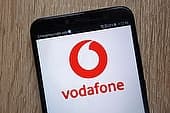Home > Mobile > News > Ofcom launch mobile signal checker
Ofcom launch mobile signal checker
OFCOM have launched what they're calling a "one stop" mobile phone coverage checker.

The tool promises to give people an idea of the level of service they can expect for voice calls, 3G and 4G services.
Importantly, it also shows what those services are like when indoors as well as outside - but it doesn't allow users to compare networks side by side.
And with the coverage based in large part on the networks' own predicted signals, how accurate is it likely to be?
Voice coverage
Ofcom say that as well as using the mobile networks' own data, they've "tested actual coverage" for voice calls in various places around the UK in order to set the threshold for reliable mobile phone calls.
Because each of the networks uses a slightly different model for calculating and displaying coverage, Ofcom say their map will show different results from the networks' in some places.
But, they say, theirs brings all that data together "and holds it to a single, independent, standard".
As they put it, the networks' "computer models are usually accurate, but can sometimes be wrong".
Basically, should Ofcom say phone calls aren't possible in a certain location using a particular network, when the network says they are, it's probably because Ofcom's threshold is a little more conservative.
In addition, they say they're conducting more tests and asking for user feedback to improve the accuracy of the map - so if both they and a provider are wrong, they want to know so they can at least correct the map.
How, or indeed whether, Ofcom have come up with an independent threshold for 3G and 4G data services is unclear.
Data about data
In this case, perhaps, it's worth looking at the results produced by an independent organisation like Rootmetrics, OpenSignal, or Ookla.
All three look at user data to help inform their guides to coverage and performance - but they vary in how much they take it into account, which can affect their results.
For example, Rootmetrics use random sampling to ensure that the huge amounts of user data they receive doesn't cause any bias.
But because of the way Rootmetrics determine the scores they give a network, those with good 4G coverage will do better. Being the first and largest 4G network in the UK, that gives EE something of an edge.
For the many of us still using 3G, and occasionally making do with 2G, those kind of results might not prove all that helpful in terms of telling us the level of coverage we can expect.
OpenSignal and Ookla may not have the scientific methodology of Rootmetrics, but by relying more on the data provided by actual mobile users it could be argued that they give a much more realistic picture of the coverage we actually get.
It's rather like comparing the coverage the networks say we should be able to get, with that experienced by people we know, but en masse.
Frequency
Another factor involved in the coverage we can expect is the frequency our chosen networks use.
Some of the frequencies being used for 4G services are better suited to coping with built up urban services, while others provide breadth of service over a wide area.
As we've previously covered here, different frequencies perform better in different situations: Vodafone and O2 both went for frequencies that offer the best range, while EE grabbed the lion's share of the frequencies that cope best in densely populated areas.
The lower frequencies used by Vodafone and O2, and Three, to an extent, are good over light urban and more rural areas, but don't cope so well with lots of users; EE, on the other hand, can deal with numbers but need more masts to maintain coverage over an area.
The higher frequencies also aren't as good at dealing with thicker walls.
Think about how wireless broadband copes from room to room in a house. It's a similar principle with mobile phone signals.
Other factors
Ofcom say their coverage map "reflects a typical signal loss for a house or car", they acknowledge that services can vary dramatically should we be somewhere with thicker walls, or in a basement flat, for example.
That's not going to provide any solace for the 40% of us who say we have a voice call black spot in our homes, despite them being covered by swathes of green suggesting a decent voice signal and good 3G coverage on the coverage map.

So, Ofcom say, remember the other factors that can affect our ability to call, text and browse - trees, hills, the number of other people trying to use the network at the same time (bear in mind how difficult it is to send and receive messages over Christmas, for example).
Finally, they point out that coverage can be affected by the device we're using, rather sweetly pointing to a "shift from handsets with external aerials to smartphones with internal aerials, which can sometimes be less effective at picking a signal".
Perhaps it's not that the signal's terrible, more that our phones are.
Get insider tips and the latest offers in our newsletter

We are independent of all of the products and services we compare.

We order our comparison tables by price or feature and never by referral revenue.

We donate at least 5% of our profits to charity, and we aim to be climate positive.
Latest News

5 December 2024
Merger of Vodafone and Three UK approved
19 August 2024
New O2 Essential Plan for those on social benefitsGet insider tips and the latest offers in our newsletter



